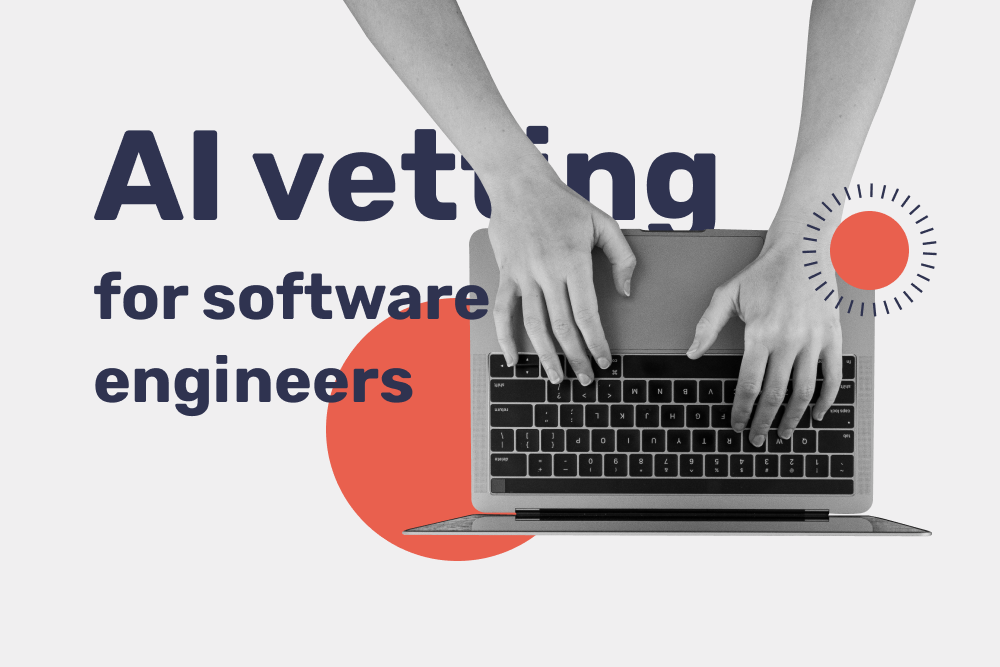The benefits of strategic staffing aren’t limited to hiring the right talent here and now. When IT staffing strategy is developed right, it drives results for the long run, reducing the upcoming costs and allowing to close the future vacancies faster. And vice versa, if an IT staffing plan has some gaps, the probability of making wrong hiring decisions grows exponentially, treating the business with $17,000 to $240,000 in bad hire costs.
This article will help you find out what can go wrong with your IT staffing strategy and how to fix the possible issues in the smartest way.
Looking for a pitfall-free way to hire the top tech candidates? Ask Bridge to help you!
Why is finding the right tech talent so challenging?
There are some IT-specific reasons that make hiring ICT (Information and Communication Technology) specialists more challenging compared to non-tech industries. Let’s analyse the biggest ones.
- Talent shortage. The global talent shortage is projected to grow, while the IT industry is the one that lacks skilled professionals the most. The US is expected to lose $160+ billion in revenue annually, if the businesses fail to bridge a skill gap.
- Competition between companies for the best candidates. A high level of competition is the reason why 43% of businesses struggle with hiring suitable candidates.
- The diversity of technologies. Another factor that makes hiring the right tech candidates so difficult is the diversity of technologies. ICT professionals have to be skilled with specific tech stacks that can’t be limited to one programming language or framework. What’s more, the top candidates should also have the necessary soft skills, which sometimes are pretty specific. For example, a great SaaS developer should be skilled not only with web or mobile development technologies, but also have a product-oriented mindset.
Hire a SaaS Developer With Valuable Tech Chops and a Strong Product Mindset
- The majority of great candidates are passive job seekers. 37% of US-based candidates are passive job seekers so the companies have to proactively source the best talent instead of waiting for the candidates to apply on their own. In our recent article, we have dwelled on the importance of active candidate sourcing; you are welcome to check it.
- Remote work and global hiring. Remote work is here to stay, while global hiring allows for choosing from the widest talent pool possible. However, given the 1 billion freelancers globally and 4,7 million remote workers in the US only, finding your perfect match can be overwhelming.
- The salary isn’t the clincher any longer. When it comes to IT, there is also a gap between what companies can offer, and what candidates would like to get, while the salary level is only one of the factors they consider when landing a job. Modern tech workers also want better work-life balance opportunities, a flexible work schedule, transparency, the feeling of belonging, meaningfulness and emotional connection with the company.
- You may follow a misguided tech staffing strategy. Setting up an effective strategic staffing process requires keeping all the factors above in mind. What’s more, there are some difficult-to-suggest mistakes companies make when staffing tech talent.
Common mistakes companies make with IT staffing strategy
Since hiring tech talent significantly differs from hiring candidates from other industries, let’s proceed with common mistakes companies make when building their staffing strategy.
Hiring International Employees to a Tech Company: 5 Best Options
Your HR manager lacks the in-depth knowledge to assess a candidate’s technical skills
The Digital Transformation Through Human Development survey considers digital transformation as a human-enabled process, driven by the combination of hard and soft skills of people staying behind it. HR managers, in turn, are responsible for choosing the necessary talent, but pretty often, they lack the necessary technical background to assess the candidate’s skills, knowledge and competencies.
Solution!
- Assign an employee with a technical background to help HR with the two-step candidate review. While most companies involve a tech-proficient specialist already at the interview stage, involving them earlier allows for choosing better-suitable candidates already during the first screening.
- Create tech literacy programs for your HR managers. As opposed to the previous solution, improving your HR managers’ tech knowledge and literacy can also be an option, however, creating such training programs requires balancing Human Resource Management and Information Technologies as scientific disciplines within your company.
- Hire a talent sourcing vendor with tech expertise. Compared to the two IT staffing solutions we suggested already, partnering with a tech talent provider is the headache-free way to go. In this case, you will be able to leverage both the technical and recruitment expertise of a vendor, staffing top tech talent faster, more efficiently and at a lower cost.
Contact Bridge sourcing team now to get all the benefits of partner-supported tech staffing!
Your search for candidates is limited to job boards and professional social media only
While 55% of companies use career platforms and 39% prefer job boards, these aren’t the only ones you can use to hire the best tech talent. Think bigger, and keep your company open to prospective candidates.
Solution!
- Consider expanding the professional network during hackathons, and conferences. Professional events are great for making valuable connections in a less formal atmosphere.
- Use GitHub and StackOverflow. These platforms are great for making an impression of a candidate’s coding skills without the need to interview them and assign a test task.
- Develop an employee referral program. Encourage your employees to share the opportunities and increase awareness of your open positions among their professional networks. The word of mouth works.
You focus on resumes too much
A resume is a tool to make the first impression on the candidate and pre-screen their skills and competencies. However, focusing on resumes too much may lead to missing the candidates with great potential and engineers you’d need to hire in future. What’s more, automated resume screening tools can sometimes be ineffective, as they only choose candidates based on skills they were assigned to look at without taking the human factor into consideration, so you have to be careful.
Solution!
- Use the resume as a starting point in gathering a pool of suitable candidates but don’t rely on it heavily.
- Embed additional candidate assessment approaches – more on them below.
You don’t use behavioral assessment
75% of employers use behavioral interview questions to assess soft skills. However, the list of such questions is pretty common, so researching them before an interview and preparing the “expected” list of answers in advance isn’t much challenging. So, you have to not only embed a behavioral assessment but also take on a creative approach.
Solution!
- As the solution, review the example of Unilever – they use interactive games that show the candidate’s personal traits and behavioral patterns. Compared to interview questions, such a game is impossible to bias, since the candidate has to act in a close to a real-life environment and make decisions on the go.
You don’t consider under or overqualified candidates
Hiring both over and under-qualified candidates has its pros and cons. An overqualified employee can quickly bring value to the table, while the candidates which lack certain skills are usually more engaged and committed. That’s why 66% of companies will train and hire candidates who may be lacking in skills but have potential, so don’t skip potentially winning applicants – even if they don’t seem to be a 100% fit.
Solution!
- Expand your reach but make sure to keep behavioral factors and soft skills in mind.
- Build a talent pool of candidates even when their resume now lacks some qualifications or skills. In this case, you will be able to gather a pool of potentially suitable candidates to fill future vacancies.
- Develop a training program for candidates who lack some skills or experience. Employees that were trained by the company are the most loyal ones.
You don’t hire diverse teams
The IT sphere is the one with the most uneven gender distribution – 92% of software developers globally are male. At the same time, working in a diverse team becomes important for 3 in 4 employees, so it’s time to break the pattern and embrace both gender and cultural diversity.
Solution!
- Set gender/cultural diversity targets. For example, aiming at gender equity can be a good tactic to follow. By the way, if you are looking for the tech labor market with the best gender equity, consider hiring remote developers in Bulgaria.
- Develop an open-minded corporate culture. In addition to the opportunity to hire more diverse teams, an open-minded corporate culture can become another competitive advantage for candidates.
You are too focused on cultural fit
Standing for shared and similar attitudes, behaviors, beliefs and values, the cultural fit has long been an issue and an important factor when outsourcing software development and gathering tech teams. Indeed, it makes communication and collaboration between team members easier.
However, when your staffing strategy is centered around cultural fit too much, it leads to hiring people who “have a lot of things to talk about” or “would be happy to hang out with each other”.
Solution!
- Focus on “skill set fit” more, and less on cultural fit. Highly effective teams are usually those which consist of specialists whose skills complement each other perfectly, filling the gaps. Friendship is great, but we still have some work to do, right?
You don’t have a talent sourcing partner with tech expertise
Running your tech staffing process in-house is one of the most intuitive hiring tactics. It allows you to stay in full control of your hiring campaign, quickly communicate to your HR manager if the hiring priorities change, and ensure seamless collaboration between HR and tech specialists at interviewing and code quality assessment stages. In contrast to these benefits, running the hiring process yourself also promises overhead costs and can be ineffective if your staffing strategy has any of the mistakes above.
Solution!
- Consider outsourcing your hiring tasks instead of taking it all on. Collaborating with a talent sourcing vendor will allow you to avoid the tech staffing mistakes we have listed above. In addition, it is a more cost-effective approach compared to hiring on your own, so let’s consider a way to better staffing.
How Bridge can fill the gaps in your IT staffing strategy
Bridge would be happy to become your talent sourcing partner and help you hire the best tech talent across three continents. Instead of struggling with finding the right candidates on your own, consider our sourcing-as-a-service to get qualified candidates for potential hires.
Our tech-enabled approach allows us to choose the best-matched talent according to your job requirements and reach out to top tech specialists five times faster. When sourcing engineering talent, we use a data-driven engine which was built for tech talent recruitment specifically and allows for automating 80% of the sourcing process. What’s more, all our pre-screened candidates are also vetted by our professionals, taking your requirements and expectations into account, so that you can interview your employees-to-be right away.
Drop us a line right now and get fine-tuned candidates within 3 days with our soucing-as-a-service!



